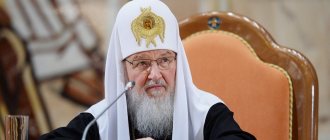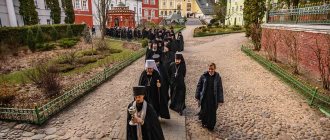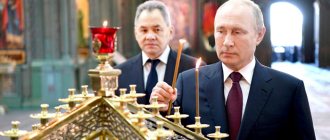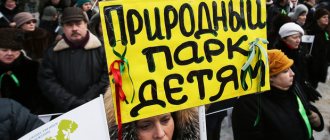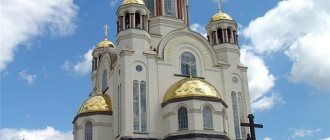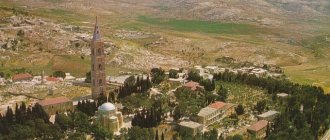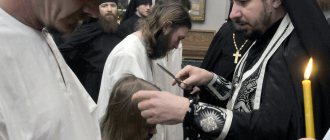Map of Covid-safe churches
According to the observations of journalists from the Stol editorial board, in most churches of the Russian Orthodox Church, precautionary measures against coronavirus infection are not observed: distance is not maintained, neither parishioners nor clergy wear masks, even during confession - during direct communication, people venerate icons and to the right hands of the shepherds, communion is performed with one spoon for everyone, most often without any processing. At the same time, the number of identified cases in 10 days - from June 3 to June 13 - increased by more than 65% - from 8,933 to 14,723 people. The incidence of coronavirus in the country has been growing for a month and a half. Russian regions are expanding their bed capacity and introducing new restrictions. In the Russian Orthodox Church, 165 clergy died from coronavirus - these are official data, but there are others, also official: in 2021, in Moscow alone, three times more priests and monks died in a year than the year before.
Believers in the temple. Photo: Ilya Naimushin/RIA Novosti
What is behind the neglect of precautionary measures in parishes: the belief that the infection recedes during prayer and grace disinfects the gifts in the chalice? Frivolity? Pseudo-Christian fatalism? There is probably a place for all this. It is not clear why the abbots, including the heads of dioceses - metropolitans - are universally ignoring the “Instruction” approved by the Holy Synod on March 17, 2021 on precautionary measures in churches “for the sake of pastoral care for people.” There was no other instruction, no one canceled this one, the Synod is still considered in our country to be the governing body of the Russian Orthodox Church in the period between the Councils of Bishops.
For some reason, the Patriarch said that “we are communing with a great shrine, which is not susceptible to any infection.” Who can medically confirm such a tempting statement of his that “after communion, our deacons consume the Holy Gifts from the common Chalice, and not one of them has gotten sick and will never get sick”? Where the patriarch got such a revelation from, who researched it, how it is confirmed by Orthodox tradition is unclear. A shrine remains a shrine, an infection remains an infection. These words can be attributed to the human intuitions of the hierarch; it is more important for us that he ended his speech at the meeting of the Holy Synod on April 13, 2021 with the promise that we “will continue our prayers and our works, strictly fulfilling all the necessary sanitary regulations and supporting our people in fulfilling these regulations, so that, with trust in the will of God, we strive for the time when this test will end and we will again be able to perform divine services as is customary in our Church, and testify to the mercy of God, which will undoubtedly be revealed by the end of the pandemic and the advent of a peaceful and calm time.”
In order to take care of yourself and your loved ones, following the word of the patriarch and the decisions of the Synod, “The Table” has constructed a Google map of churches in different cities and dioceses of the Russian Orthodox Church, where precautionary measures are observed, especially during communion of the Holy Mysteries of Christ.
We ask everyone who can to respond to our initiative and send the exact name and address (city, street, house number) of churches where precautionary measures are observed during worship and, of course, during communion. Briefly write down what measures are being followed. And, of course, distribute this information and our map on social networks, forward it to your friends. We hope that this will also help preserve people's lives and health.
Write to us by e-mail: [email protected]
IMPORTANT!
- We do not accept anonymous information (your full name and contacts must be indicated in the letter).
- We do not collect or publish information about those churches where measures are not observed.
- The said temple should belong to the Russian Orthodox Church of the Moscow Patriarchate (although we will be glad if other denominations and jurisdictions follow our example and make similar maps, and we are ready to report this on the Table website).
For the first time in modern Russia, a wall map of the Russian Orthodox Church has been published
-A
A+
Photo: Prikhody.ru
The wall map “Orthodox Russia” was presented on October 3, 2021 at the TASS agency at the press conference “Russian Orthodox Church on Maps,” reports the “Parishes” portal.
“When looking at the presented map, the first thing that catches your eye is its mosaic nature. There are many different colors, and each individual color is a separate diocese. Why could such a map even arise? Back in 2009, in Russia, in one region, as a rule, there was one diocese. There were 69 dioceses within the borders of Russia at the time of the election of His Holiness Patriarch Kirill; now there are 181 of them. That is, the number of dioceses has more than doubled. Accordingly, this means that several dioceses operate on the territory of one region,” the “Parishes” portal quotes Archimandrite Savva (Tutunov), Deputy Administrator of the Moscow Patriarchate.
“Why is a project with a map interesting? Because previously it was possible to take a map of the regions of the Russian Federation and immediately see where each diocese is located. Now this is not the case: now, in order to see the boundaries of the dioceses, you need to draw them separately, which is one of the main values of this project,” the clergyman said.
Photo: Prikhody.ru “We calculated what we called the density of churches: how many churches there are in a certain area per population. Moreover, we did not take just any churches, but those where, for example, the liturgy is celebrated once a week or more often, once a month or more often. These are things that are important in order to understand where more churches need to be opened, and where, on the contrary, there are not enough of them; which dioceses you need to pay attention to, which ones you don’t,” added Archimandrite Savva.
According to him, such a map is certainly needed in seminaries for studying the modern history of the Russian Orthodox Church, because “Without her, it won’t be clear what’s going on.”
In turn, in an interview with the “Parishes” portal, the head of the Center for the Geography of Religions at the Synodal Department for Relations of the Church with Society and the Media, religious scholar Roman Silantiev noted that the new map will be useful to the widest audience. “I think that it should be in every diocese, deanery or monastery, and even a simple believer would be pleased to hang it on the wall,” said R. Silantiev.
The wall map “Orthodox Russia” is a cartographic information project.
Atlas of the Russian Orthodox Church
Previously, INKOTEK, together with the Foundation for Promotion of Social and Humanitarian Relations “Interaction of Civilizations,” released a two-volume Atlas of the Russian Orthodox Church.
Photo: Prikhody.ru
The atlas contains maps of all dioceses of the Russian Orthodox Church, which indicate monasteries, cathedrals, parish communities, monasteries, diocesan administrations, synodal institutions, educational institutions and other objects. Maps are accompanied by text blocks, tables and diagrams, as well as lists of displayed objects with exact addresses.
The publication is distributed in two versions - only Russia and Russia plus dioceses outside its borders (CIS and non-CIS countries).
Online map of the Russian Orthodox Church
A unified online map of churches is presented on the official portal of the Russian Orthodox Church. It shows not only churches, but also dioceses, monasteries, chapels, houses of worship and other church sites. Flexible filtering of objects by type, country, status, condition and even the presence of ramps is provided. Photos of all objects in the visible area of the map are also attached. When you click on the selected object, basic contact information about it appears, including a link to the site.
“The need to implement such a project became obvious to us due to the development of information technology and the intention of users - both parishioners and those simply interested in religion - the location of churches and monasteries, the desire to receive information about their location online, which would also be regularly updated. The Synodal Department for Relations of the Church with Society and the Media considers this map as “an open and publicly accessible database, which is freely distributed to all interested in all possible formats,” said the deputy chairman of the Synodal Department for Relations with Society and Media at a press conference in TASS. Media Vakhtang Kipshidze.
“We rely on the needs that users have. We also reflected the presence of a ramp at a particular facility so that access is possible for people with disabilities,” he added.
“Dioceses: familiar and unknown”
A new project, “Dioceses: Familiar and Unknown,” dedicated to recently created dioceses, is being implemented on the “Parishes” portal. Its goal is to present the life of new dioceses, the centers of which are usually small cities, and to show that the large-scale reform of the diocesan structure, initiated by Patriarch Kirill, contributed to the revitalization of church life in the regions and the development of many new church projects.
This year it is planned to highlight the life of ten dioceses. The site has already published some materials dedicated to the Alatyr, Akhtubinsk, Bezhetsk, Belevsk and Vyksa dioceses. Ahead are the dioceses of Siberia, the Far East, and the Volga region.
The section “Dioceses: familiar and unknown” is updated several times a week. It publishes interviews with bishops of new dioceses, essays about priests and laity.
June 26, 2015
An online map of Orthodox shrines has appeared in Russia
February 16, 2015
Ethnographers have compiled a religious atlas of the Leningrad region
tags: maps, Russian Orthodox Church
“Unified map of temples and monasteries”: tips for first users
Estimated reading time: less than a minute.
Recently, an updated version of the large-scale Internet project “Unified Map of Temples and Monasteries” appeared online, in the creation of which dioceses, churches and monasteries of the Russian Orthodox Church took part.
Today, the beta version of the Map of Temples is available on the official website of the Moscow Patriarchate, and the creators of the project hope that soon the Map will be available on all smartphones, car navigators and other navigation devices.
“It is obvious that the Russian Orthodox Church should have a single map,” says Pavel Klochkov, founder of the Prikhod.Ru project and one of the creators of the “Unified Map of Temples and Monasteries,” which would allow a person to find exactly the Orthodox organization that he needs. Your own temple, or a temple in a certain country and a certain locality, or, for example, a temple with a ramp for people with disabilities.”
The pilot version of the project includes more than 15 thousand Orthodox sites in Russia, Ukraine, Belarus and Moldova. In the future, it is planned to include other countries in the project.
According to Pavel Klochkov, it took the project creators several years to fill out the Map and check information about each object.
“But we understand that diocesan employees could not enter information about each church as accurately as representatives of a given church could do. Therefore, we are announcing our project as an unfinished product and hope that in the next couple of years we will bring it to the desired state,” explains Pavel.
